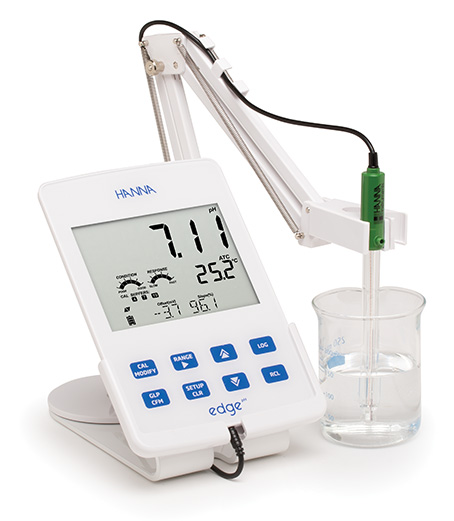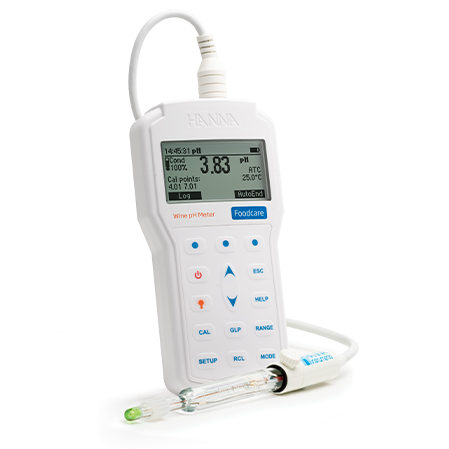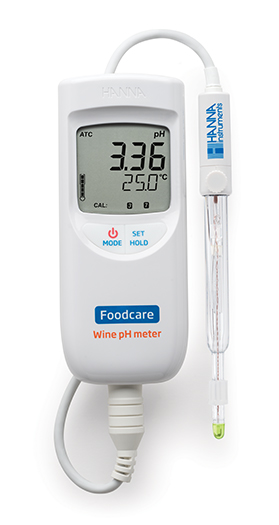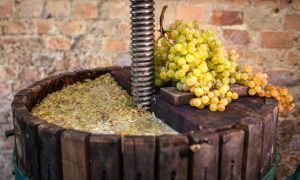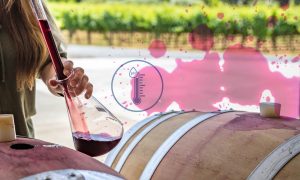Technical fermentation of red wines can be carried out in different types of fermenters.
They differ in:
- degree of aeration
- allows the implementation of complete fermentation
- time of skin contact
- maceration and extraction of phenolic compounds
The classical procedure (discontinuous fermentation) implies the simultaneous development of fermentation and maceration. It can be open fermentation (open vessels, free air access) and closed fermentation (closed vessels without air access).

In open fermentation with a raised chimney,
the CO2 formed at the beginning of the fermentation pushes the chimney upwards, so that it collects on the surface in the form of a cap.
the CO2 formed at the beginning of the fermentation pushes the chimney upwards, so that it collects on the surface in the form of a cap.
There is a loss of alcohol (0.5%), and in the part of the coma that is submerged, maceration takes place. The upper part of the coma is exposed to air where there are favorable conditions for the development of aerobic microflora, the most important bacteria of acetic fermentation and mold. In order to reduce the influence of the air, occasional immersion of the chimney or circular pouring is carried out.
In open fermentation with submerged chimney, the grates keep the chimney constantly submerged in the wine, so that only the upper surface layer of the wine is exposed to aeration. The must, which is in contact with the air, is constantly renewed due to the release of CO2, which slows down the development of acetic fermentation bacteria. There is also an automatic rinsing mash used in industrial production conditions. Closed fermentation is carried out in a closed vessel where access to air is minimized. Fermentation can take place with the chimney raised and submerged. It is most often carried out with a raised chimney because mixing the submerged chimney is difficult.
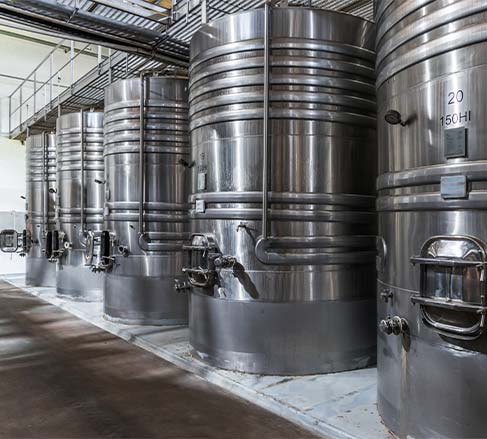
There are different procedures for carrying out continuous fermentation of red wines. What they have in common is that the fermentation and maceration of the beans are carried out at the same time. Fermentation vessels are large in volume and most often made of metal. They are used mainly for the production of cheap wines.
The time is spent in 2-10 days, after which the wine is drained from the pomace. After swelling, a quiet fermentation or stirring of young wine without a pomace is carried out.
pH value of red wine can be between 3,40 and 3,70 depending on type of grape.
For measuring pH in grape and wine Hanna Instruments
has numerous solutions. Check them all!!
has numerous solutions. Check them all!!
HI2002 edge®
Dedicated pH/ORP Meter
with HI10480 Wine electrode
with HI10480 Wine electrode
edge’s groundbreaking design is the culmination of Hanna’s vision, design capabilities, integrated production and world class R&D. edge is a single, easy to use meter that can measure pH and ORP.
edge screen size
Advanced pH Electrode Diagnostics edge features advanced pH electrode diagnostics to ensure worry-free measurements. Diagnostics include Hanna’s exclusive CAL CheckTM feature that alerts users to potential problems during calibration. The Sensor CheckTM feature for glass and junction integrity is enabled when using optional pH electrodes with a matching pin.
HI98169
pH meter for wine
Rugged, waterproof, portable pH meter for wine that measures pH and temperature of must in winemaking. This meter is supplied with a specialized pH probe that features an open junction with Clogging Prevention System (CPS・) technology. HI98169 is supplied with FC10483 pH electrode, pH 3.00 buffer solution sachets (2), pH 7.01 buffer solution sachets (2), HI700635 Cleaning solution for wine deposits sachet, HI700636 cleaning solution for wine stains sachet, 100 mL plastic beaker (2), HI920015 micro USB cable, 1.5V AA batteries (4), instruction manual, guidebook for winemakers, and quality certificate in a HI720169 hard carrying case with custom insert.
Choose from seven standard pH buffers and five custom values to obtain up to five point calibration and achieve high precision readings with a 0,001 pH resolution and a pH accuracy of ア0,002. The log-on-demand feature allows users to store up to 200 samples that can later be transferred to a PC with the HI920015 USB cable and HI92000 software.
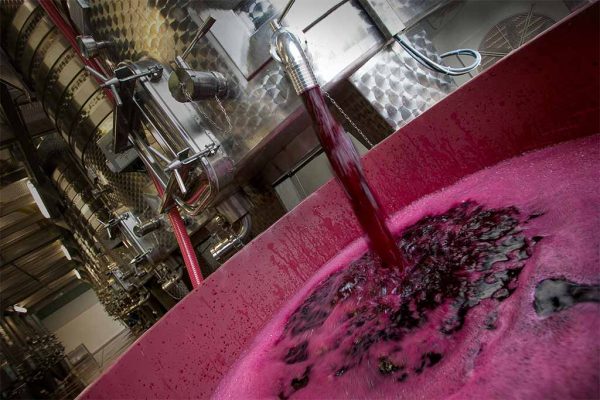
HI99111
Portable pH Meter
for Wine Analysis
for Wine Analysis
HI99111 is a portable, microprocessor-based pH and temperature meter. Main features include: extended pH and temperature ranges; waterproof and compact casing; large dual-line display; low battery detection; automatic pH calibration at one or two points within two memorized buffer sets (standard or NIST); selectable temperature unit
(°C or °F).
(°C or °F).
The FC10483 pH probe features an open junction with Clogging Prevention System (CPSTM) technology, has a builtin temperature sensor for simultaneous temperature compensated pH and temperature readings.
HI99111 is supplied with FC10483 pH/temperature probe with flat tip and Quick Connect DIN connector with 1m (3.3’) cable, pH 3.00 and 7.01 buffer sachets, HI700635 Cleaning solution for wine deposits sachets (2), HI700636 Cleaning solution for wine stains (2), 100 mL beaker, 1.5V AAA batteries (3), calibration certificate of meter, calibration certificate of probe, instruction manual and HI710142 rugged carrying case.
HI10482
pH Electrode for Wine
HALO Bluetooth®
HALO Bluetooth®
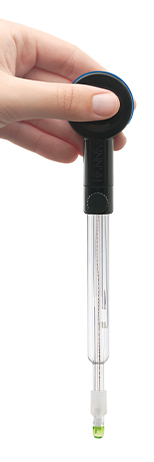
The HI10482 HALO is a Bluetooth Smart (Bluetooth 4.0) pH and temperature electrode with Hanna’s Clogging Prevention System (CPS).
This electrode has a unique ground glass junction coupled with a PTFE sleeve to prevent particulates within a sample from clogging the junction. In addition to the specialized junction, the HI10482s glass body and spherical sensing bulb make it ideal for use in a wide variety of applications. All readings are transmitted directly to the HI2202 edgeblu or a compatible Apple or Android device running the Hanna Lab App.
Author:
Tajana Mokrović
mag.nutr.
Tajana Mokrović
mag.nutr.

With Great Product Come Great Results

